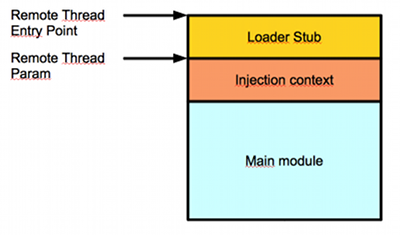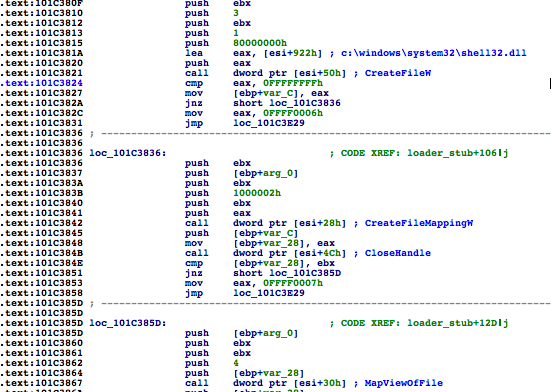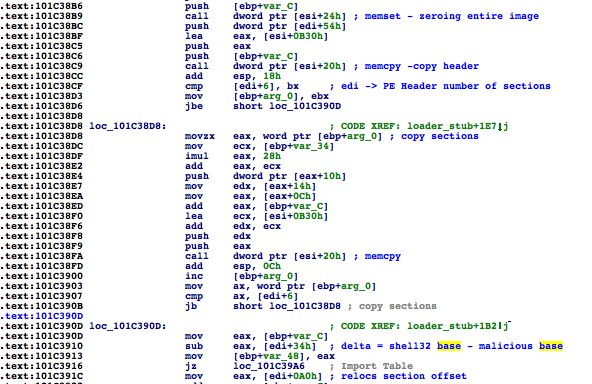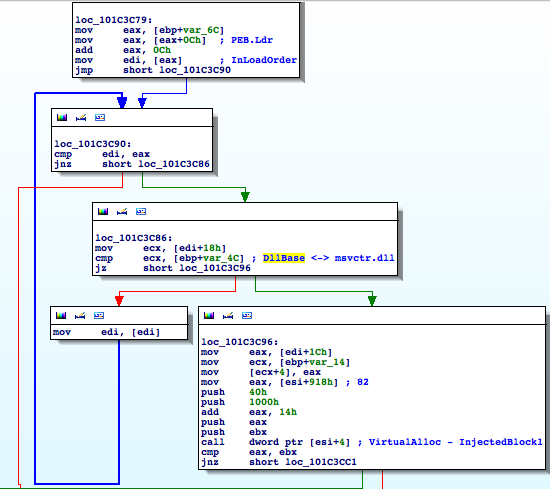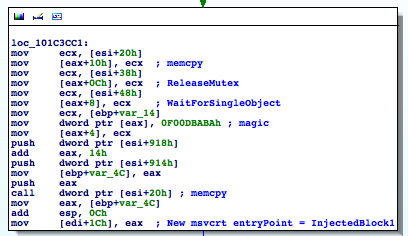When I was reading the CrySyS report on Flame (sKyWIper)[1], one paragraph, in particular, caught my attention:
In case of sKyWIper, the code injection mechanism is stealthier such that the presence of the code injection cannot be determined by conventional methods such as listing the modules of the corresponding system processes (winlogon, services, explorer). The only trace we found at the first sight is that certain memory regions are mapped with the suspicious READ, WRITE and EXECUTE protection flags, and they can only be grasped via the Virtual Address Descriptor (VAD) kernel data structure
So I decided to take a look and see what kind of methods Flame was using.
Flame is conceived to gather as much information as possible within heterogeneous environments that can be protected by different solutions, isolated at certain levels, and operated upon by different profiles. Which means that, from the developers point of view, you can’t assume anything and should be prepared for everything.
Some of the tricks implemented in Flame seem to focus on bypass just as much AV products, specifically in terms of heuristics. A distributed “setup” functionality through three different processes (winlogon, explorer, and services ) is way more confusing than letting a unique, trusted process do the job; i.e. it’s less suspicious to detect Internet Explorer coming from explorer.exe than winlogon.
In essence, the injection method seems to pivot around the following three key features:
· Disguise the malicious module as a legitimate one; Shell32.dll in this case.
· Bypass common registration methods supplied by the operating system, such as LoadLibrary, to avoid being detected as an active module.
· Achieve the same functionality as a correctly-registered module.
So, let’s see how Flame implements it.
During the initial infection when DDEnumCallback is called, Flame injects a blob and creates a remote thread in Services.exe. The blob has the following structure:
The loader stub is a function that performs the functionality previously described: basically a custom PE loader that’s similar to the CryptoPP dllloader.cpp[2] with some additional tricks.
The injection context is a defined structure that contains all the information the loader stub may need including API addresses or names, DLL names, and files—in fact, the overall idea reminded me of Didier Stevens’ approach to generating shellcodes directly from a C compiler[3]
Injection Context: Blob + 0x710
API Addresses:
|
esi OpenMutexW
esi+4 VirtualAlloc
esi+8 VirtualFree
esi+0Ch VirtualProtect
esi+10h LoadLibraryA
esi+14h LoadLibraryW
esi+18h GetModuleHandleA
esi+1Ch GetProcAddress
esi+20h memcpy
esi+24h memset
esi+28h CreateFileMappingW
esi+2Ch OpenFileMappingW
|
esi+30h MapViewOfFile
esi+34h UnmapViewOfFile
esi+38h ReleaseMutex
esi+3Ch NtQueryInformationProcess
esi+40h GetLastError
esi+44h CreateMutexW
esi+48h WaitForSingleObject
esi+4Ch CloseHandle
esi+50h CreateFileW
esi+54h FreeLibrary
esi+58h Sleep
esi+5Ch LocalFree
|
The loader stub also contains some interesting tricks.
Shell32.dll: A matter of VAD
To conceal its own module, Flame hides itself behind Shell32.dll, which is one of the largest DLLs you can find on any Windows system, meaning it’s large enough to hold Flame across different versions.
Once shell32.dll has been mapped, a VAD node is created that contains a reference to the FILE_OBJECT, which points to Shell32.dll. Flame then zeroes that memory and loads its malicious module through the custom PE loader, copying sections, adjusting permissions, and fixing relocations.
As a result, those forensics/AntiMalware/AV engines walking the VAD tree to discover hidden DLLs (and not checking images) would be bypassed since they assume that memory belongs to Shell32.dll, a trusted module, when it’s actually mssecmgr.ocx.
The stub then calls to DllEntryPoint, passing in DLL_PROCESS_ATTACH to initialize the DLL.
The malicious DLL currently has been initialized, but remember it isn’t registered properly, so cannot receive remaining events such as DLL_THREAD_ATTACH, DLL_THREAD_DETACH, and DLL_PROCESS_DETACH.
And here comes the final trick:
The msvcrt.dll is loaded up to five times, which is a little bit weird, no?
Then the PEB InLoadOrder structure is traversed to find the entry that corresponds to msvcrt.dll by comparing the DLL base addresses:
Once found, Flame hooks this entry point:
InjectedBlock1 (0x101C36A1) is a small piece of code that basically dispatches the events received to both the malicious DLL and the original module.
The system uses this entry point to dispatch events to all the DLLs loaded in the process; as a result, by hooking into it Flame’s main module achieves the goal of receiving all the events other DLLs receive. Therefore, it can complete synchronization tasks and behaves as any other DLL. Neat.
I assume that Flame loads msvcrt.dll several times to increase its reference count to prevent msvcrt.dll from being unloaded, since this hook would then become useless.
See you in the next post!


